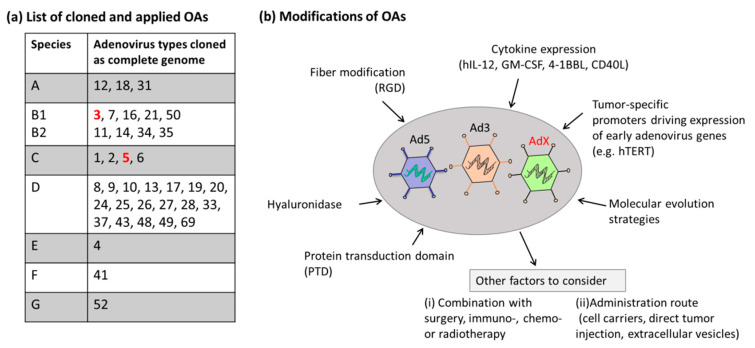Figure 3.
Cloned adenoviruses and modifications. (a) List of cloned wild-type adenoviruses which can be converted into tumor-specific OAs in the future. Adenovirus types marked in red (Ad5 and Ad3) were converted into OAs and also applied in the clinic. (b) To improve the efficacy of OAs and to arm novel OA candidates (AdX), diverse strategies were explored in clinical trials. Cytokine expression and release by OAs are able to stimulate immunity in the tumor microenvironment. Tumor-specific promoters, such as the hTERT promoter, guarantee tumor-specific replication of OAs and improve safety. The protein transduction domain (PTD) could penetrate cancer cells and enhance the transduction of OAs into cancer cells. Fiber modification such as the insertion of the tripeptide Arg-Gly-Asp (RGD) motif into the shaft of OAs, improves the binding of OAs to cancer cells. The enzyme hyaluronidase could be added as a transgene, which could degrade hyaluronic acid in the extracellular matrix and facilitate the spread of OAs through the tumor microenvironment. Furthermore, molecular evolution strategies can be applied. Other factors to consider are the administration route and the combination with conservative cancer therapies.

